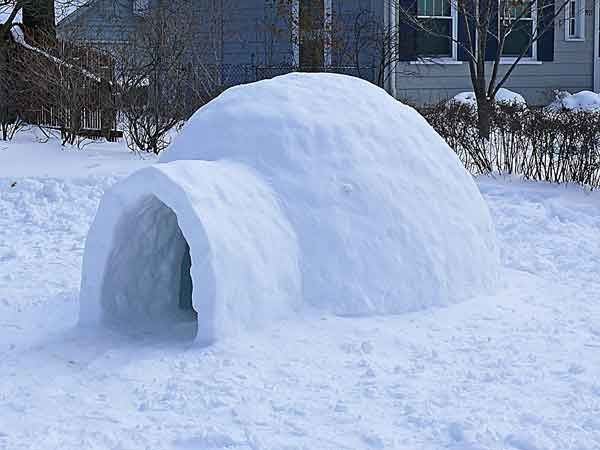 | ||
An igloo (Inuit language: iglu, Inuktitut syllabics ᐃᒡᓗ [iɣˈlu] (plural: igluit ᐃᒡᓗᐃᑦ [iɣluˈit])), also known as a snow house or snow hut, is a type of shelter built of snow, typically built when the snow can be easily compacted.
Contents
Although igloos are stereotypically associated with all Inuit, they were traditionally associated with people of Canada's Central Arctic and Greenland's Thule area. Other Inuit people tended to use snow to insulate their houses, which were constructed from whalebone and hides. Snow is used because the air pockets trapped in it make it an insulator. On the outside, temperatures may be as low as −45 °C (−49 °F), but on the inside the temperature may range from −7 °C (19 °F) to 16 °C (61 °F) when warmed by body heat alone.

How an igloo keeps you warm
Nomenclature
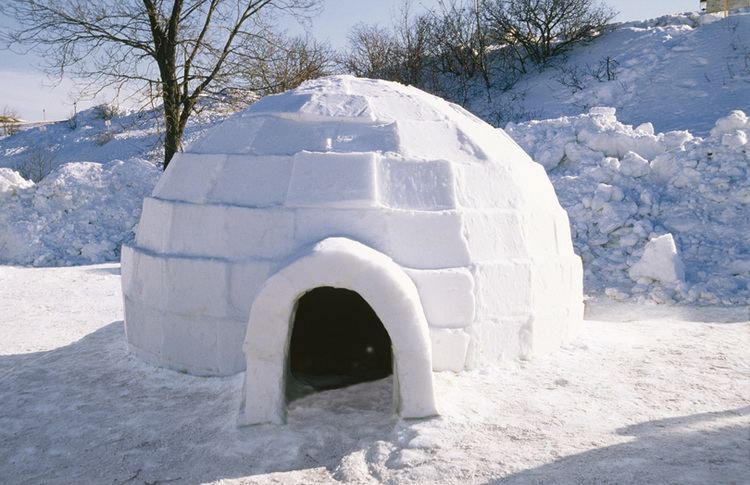
The Inuit language word iglu (plural igluit) can be used for a house or home built of any material, and is not restricted exclusively to snowhouses (called specifically igluvijaq, plural igluvijait), but includes traditional tents, sod houses, homes constructed of driftwood and modern buildings. Several dialects throughout the Canadian Arctic (Siglitun, Inuinnaqtun, Natsilingmiutut, Kivalliq, North Baffin) use iglu for all buildings, including snowhouses, and it is the term used by the Government of Nunavut. An exception to this is the dialect used in the Igloolik region. Iglu is used for other buildings, while igluvijaq, (plural igluvijait, Inuktitut syllabics: ᐃᒡᓗᕕᔭᖅ) is specifically used for a snowhouse. Outside Inuit culture, however, igloo refers exclusively to shelters constructed from blocks of compacted snow, generally in the form of a dome.
Types
There are three traditional types of igloos, all of different sizes and used for different purposes.
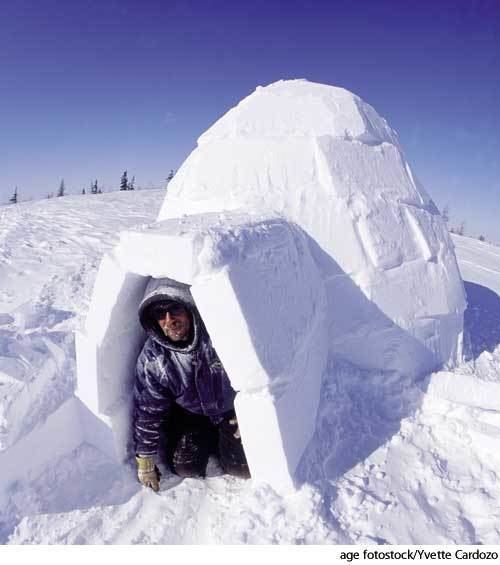
Construction
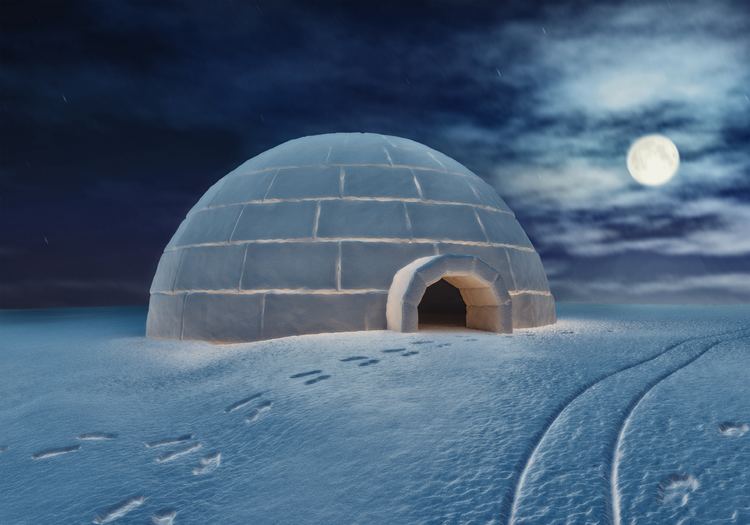
Snow igloos are built in the shape of a catenoid, which offers optimal ratios between the height and diameter of the structure to eliminate the structural tension which could otherwise cause it to implode or bulge. The stresses of snow as it ages and compresses against the igloo will not cause it to buckle because in an inverted paraboloid or catenoid the pressures are exclusively compressive.
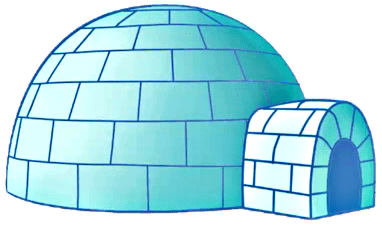
This design originates from the Central Inuit. In applied mechanics, the equation for this type of structure is written y = a(cosh x/a- 1) where y is the height to any point in the surface, x is the horizontal distance to the same point, and a is a constant.
If the walls are of uniform thickness and density, the maximum compressive stress at the base of a paraboloid is
where d is the diameter at the base, h is the height,
Since stress is a force per unit area, if the walls are of uniform thickness the compressive stress is independent of wall thickness; thicker walls provide better insulation but do not strengthen the structure because of added weight.
The maximum compressive stress at the base of the igloo can be obtained by multiplying S,/yd times the snow unit weight y and the mean igloo base diameter.
Igloos gradually become shorter with time due to the compressive creep of the snow.
Building methods
The snow used to build an igloo must have enough structural strength to be cut and stacked appropriately. The best snow to use for this purpose is snow which has been blown by wind, which can serve to compact and interlock the ice crystals. The hole left in the snow where the blocks are cut is usually used as the lower half of the shelter. Sometimes, a short tunnel is constructed at the entrance to reduce wind and heat loss when the door is opened. Snow's effective insulating properties enable the inside of the igloo to remain relatively warm. In some cases, a single block of clear ice is inserted to allow light into the igloo. Animal skins were used as door flaps to keep warm air in. Igloos used as winter shelters had beds made of ice and caribou furs. These 'ice beds' are unique to the region and Inuit culture.
Architecturally, the igloo is unique in that it is a dome that can be raised out of independent blocks leaning on each other and polished to fit without an additional supporting structure during construction. An igloo that is built correctly will support the weight of a person standing on the roof. In the traditional Inuit igloo, the heat from the kudlik (qulliq, stone lamp) causes the interior to melt slightly. This melting and refreezing builds up a layer of ice that contributes to the strength of the igloo.
The sleeping platform is a raised area. Because warmer air rises and cooler air settles, the entrance area acts as a cold trap whereas the sleeping area will hold whatever heat is generated by a stove, lamp, body heat, or other device.
The Central Inuit, especially those around the Davis Strait, lined the living area with skin, which could increase the temperature within from around 2 °C (36 °F) to 10–20 °C (50–68 °F).
